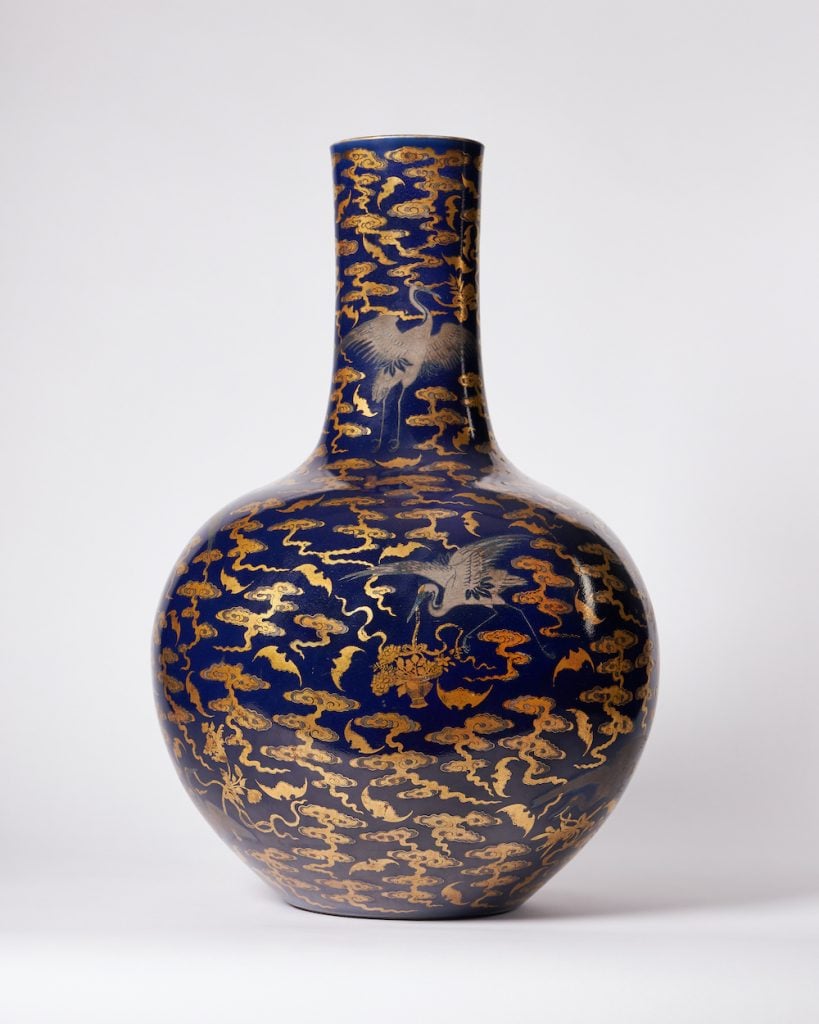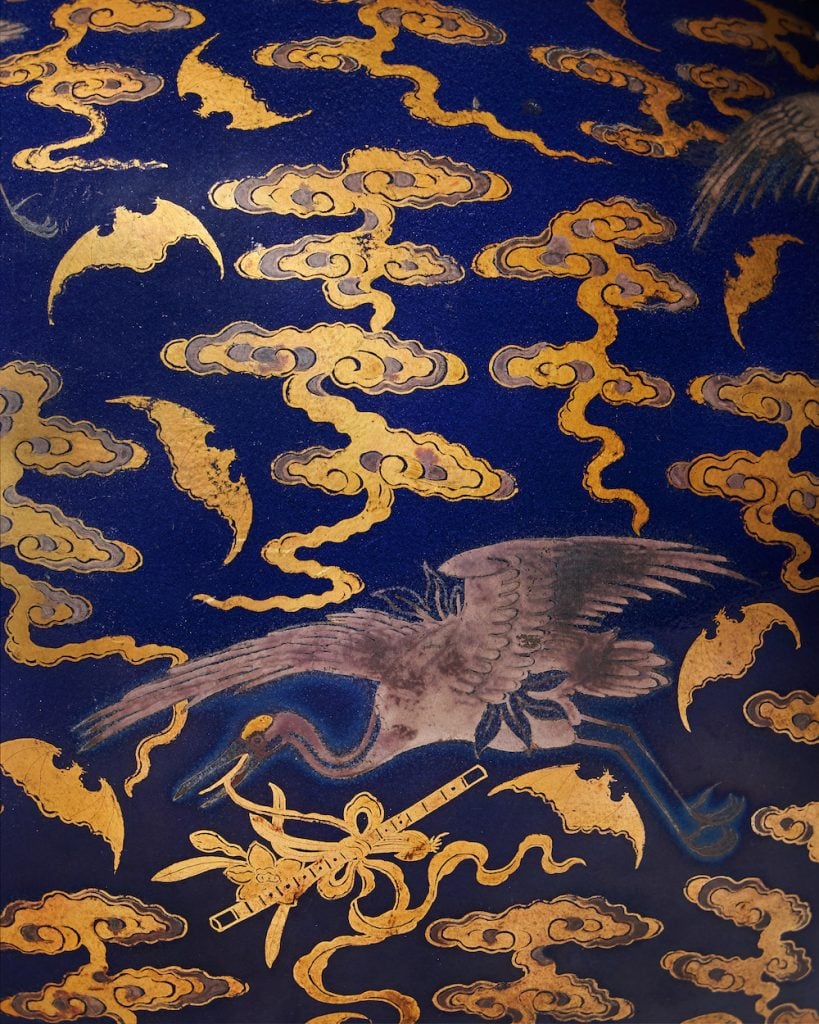Auctions
A British Surgeon Bought a Cheap Urn For His Kitchen Nook. Now, the Qing Dynasty Vase May Fetch $180,000 at Auction
The vessel, it turns out, may have been made in the 18th century for the court of the Qianlong Emperor.

The vessel, it turns out, may have been made in the 18th century for the court of the Qianlong Emperor.

Artnet News

In the 1980s, a British surgeon purchased a royal blue vase for a few hundred pounds and displayed it in his kitchen. Little did he know that the object was a rare Chinese artifact—and that it could be worth a thousand times what he paid.
How much more, exactly, we may find out soon. The vase is set to hit the block at the Newbury, England-based auction house Dreweatts later this month, where it’s estimated to sell for £100,000–150,000 ($125,000–185,000).
Experts at Dreweatts believe the porcelain urn was created in the 18th century for the court of the Qianlong Emperor. Standing over two feet tall, it’s adorned with gold graphics and eight silver cranes, each of which holds in its beak an object symbolizing one of the eight immortals of Taoism. On its base is the six-character signature of the Qianlong period (1736–95).

Courtesy of Dreweatts.
The style of vessel is called tianqiuping, or “Celestial Sphere vase”—an allusion to Chinese mythological depictions of heaven as a globe hovering above Earth. Its color, too, has spiritual connotations: the cobalt glaze is called “sacrificial blue,” based on similarly-hued containers used during sacrifices at the Imperial Altar of Heaven, according to Dreweatts.
Mark Newstead, a consultant at Dreweatts who discovered the piece, first saw it in the home of the late surgeon “in the late 1990s or early 2000s,” he told Artnet News over email.
“The house was large but the kitchen quite small and this piece was in an alcove and stood out in terms of the luminosity of the color and its unusual design,” he recalled. “I just said I thought it was rather good. I am not sure they really took what I said very seriously, and I heard nothing more.”
When Newstead returned to the house years later, the piece had been moved to the dining room. The surgeon, he explained, was from “quite a ‘grand’ family, so I assumed it had been inherited, as his ancestors had been out in the Orient in the 19th century. However, the daughter is reasonably sure he bought it between about 1988–93. The origin is a bit of a mystery as there are no receipts and she thinks he just acquired it as a decorative vase.”
By the time the vase made its way to Dreweatts, it had again been on display in a kitchen—this one belonging to the surgeon’s son, who inherited the object. It’s set to highlight the auction house’s Chinese Ceramics and Works of Art sale on May 18th.